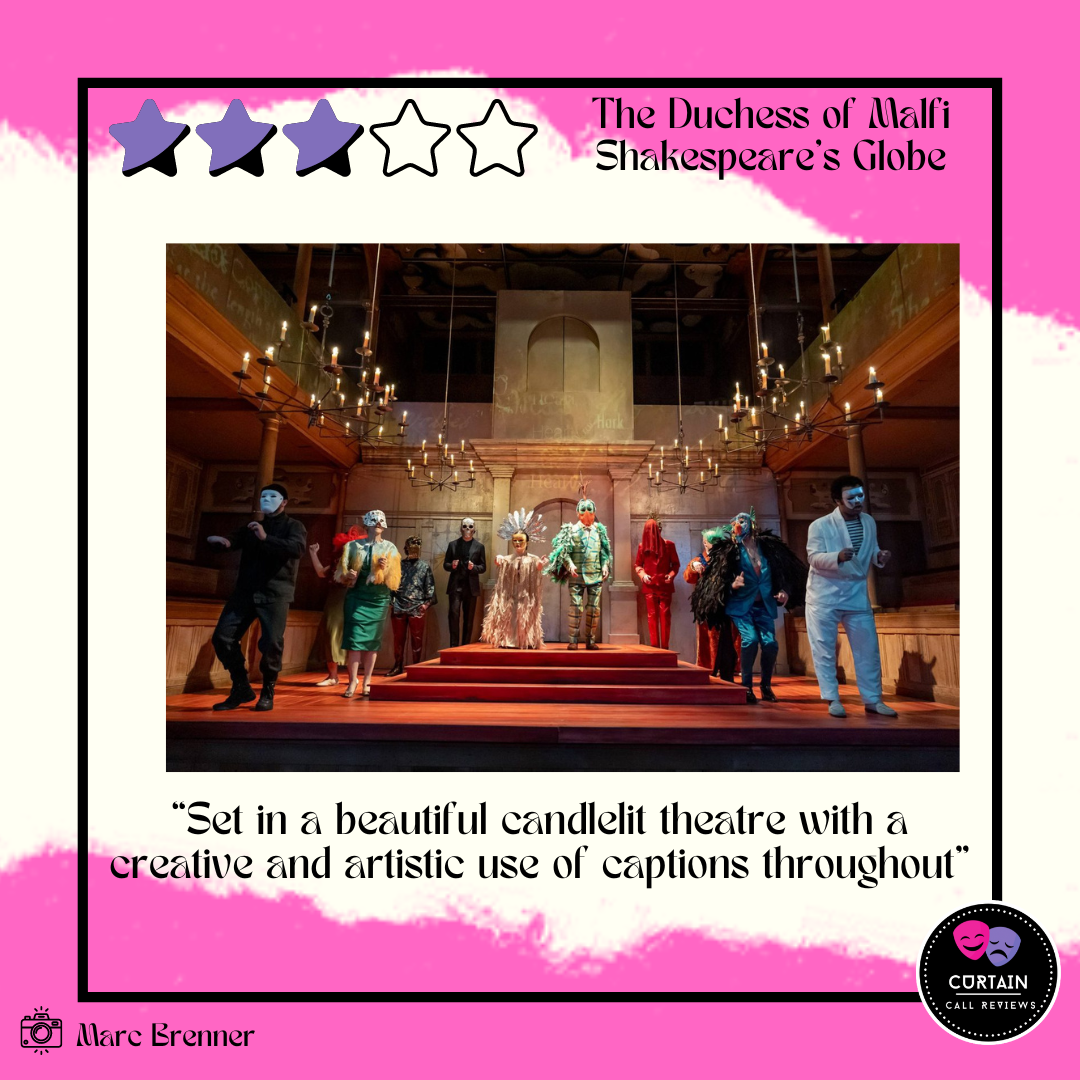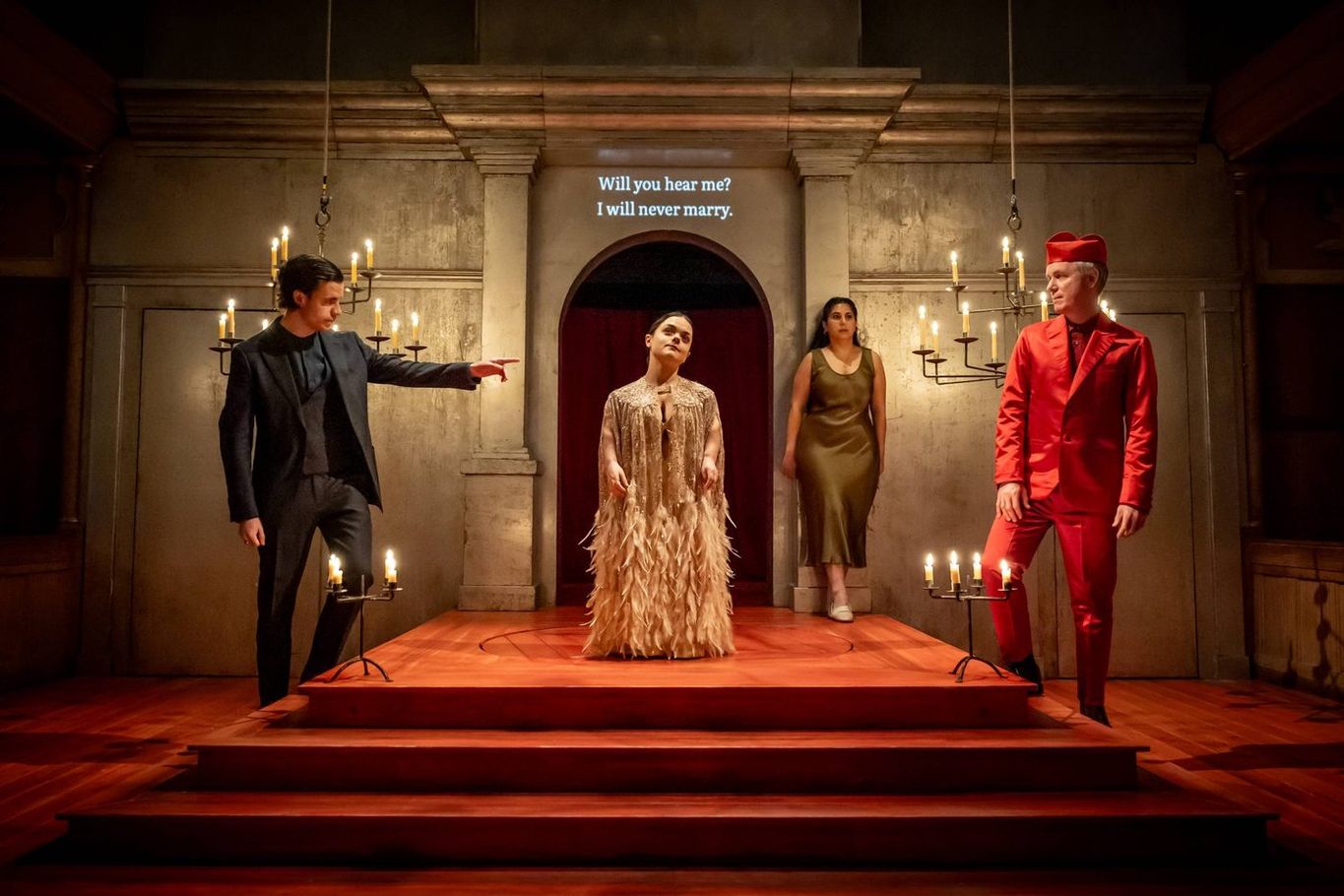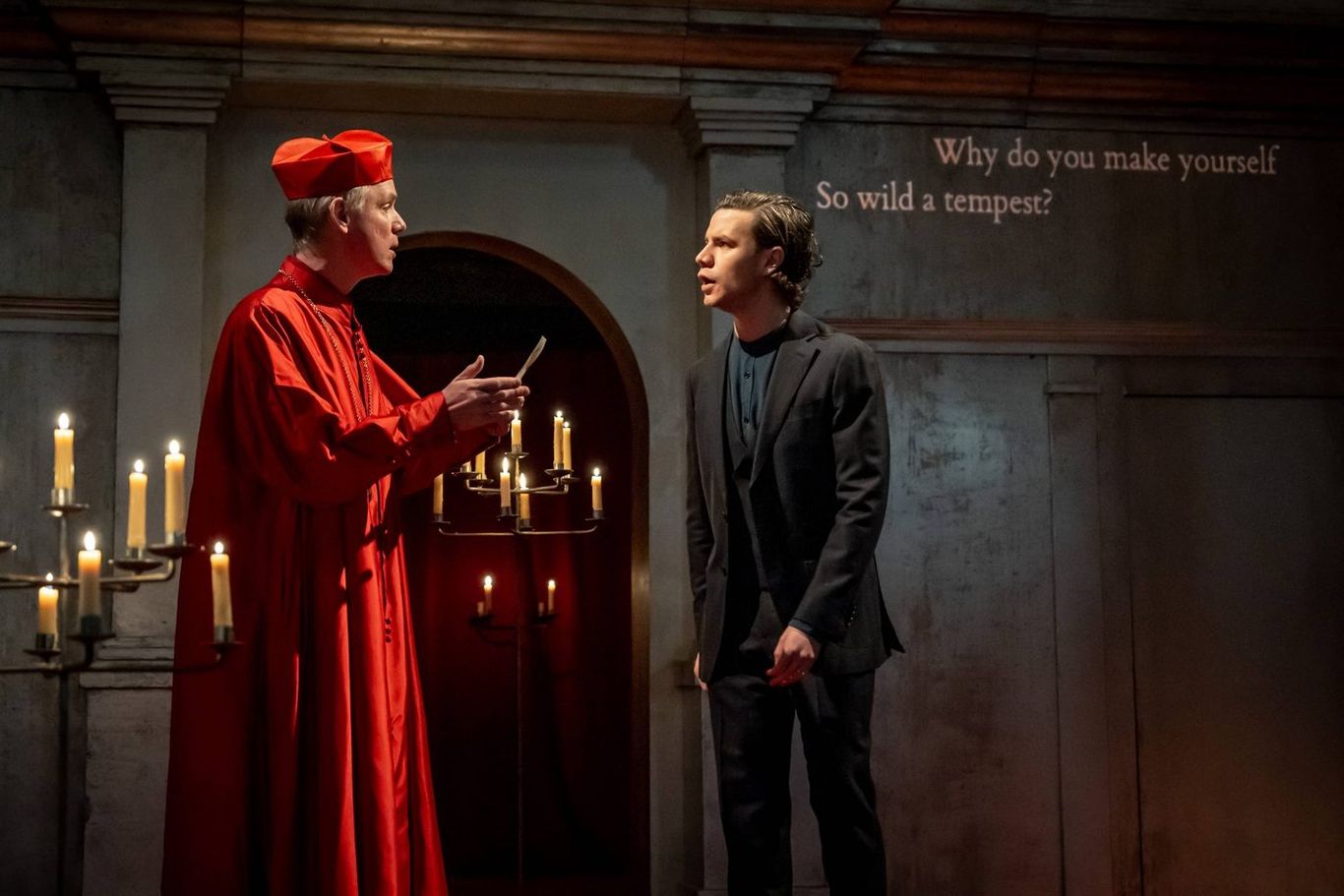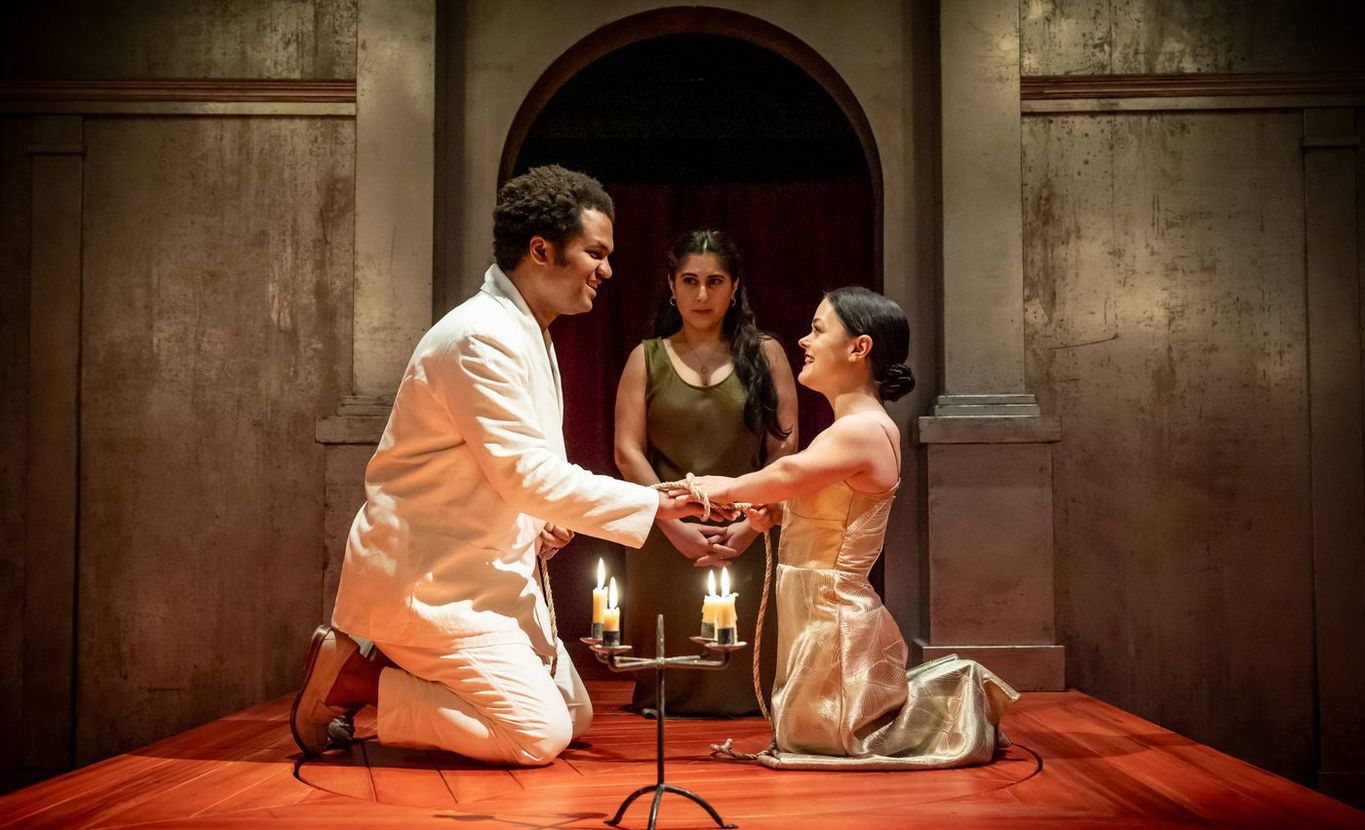
The Duchess of Malfi
The show takes place in the Sam Wanamaker Playhouse, which is part of the Globe complex. The theatre itself is stunning, reminiscent of a mini Globe. Lit predominantly by candlelight, the ambiance is enchanting. Throughout the performance, chandeliers are occasionally lowered, and candles are extinguished to heighten the atmosphere. The seating consists of benches, although some can be removed for groundlings, as I learned from conversing with fellow patrons. During the show I attended, everyone had a seat, and I observed provision for wheelchair users.
Regarding accessibility, the website mentions audio described and relaxed performances. However, a standout feature of the show was the creative use of captions by Text Consultant Giles Taylor. Although I personally didn't require them, I found the captions visually striking and seamlessly integrated into the set. At times, they served as backdrop art, enhancing the overall aesthetic. While I can't speak to their functionality, especially during action-packed scenes, I appreciated their contribution to the production. It would be wonderful to see this innovative role incorporated into more shows.

In line with the genre's expectations, tragedy and death are waiting for us. At the play's outset, we are confronted with the Duchess's recent loss of her husband. Portrayed by Oliver Johnstone, her twin brother Ferdinand with undisclosed motivations opposed to her finding a new husband. To help achieve this, Ferdinand enlists the services of Bosola for surveillance. However, the narrative speeds up in a muddle as the Duchess secretly weds Antonio, played by Oliver Husband, and seemingly bears three children without clear passing of time. Despite their ongoing secret marriage, Ferdinand and Bosola persist in their quest to discover the children's father, presuming them to be born out of wedlock and to be a stain on both family honor and religion. Upon uncovering the truth, Ferdinand subjects the Duchess to relentless torment, which leads the way for a series of tragic deaths.

As with many revenge tragedies, the play progressively darkens in tone and setting. This transition was effectively executed after the interval, with lighting gradually diminishing, culminating in scenes enveloped in near-complete darkness.
The two lead actors, Francesca Mills as the Duchess and Arthur Hughes as Bosola, commendably carry the show. It opens with a cringeworthy party dance accompanied by a pop song from the early 2000s past, performed by the live band in an upbeat jazz style, which seemed out of place. There were attempts to modernise certain aspects, including references to Botox and roofies, as well as altering apricots to "apricocks," which left me somewhat perplexed. Additionally, some actors delivered lines devoid of emotion, exhibiting a peculiar pattern of emphasising odd words, reminiscent of amateur Shakespeare productions.

In summary, the show left me with mixed feelings, featuring both remarkable moments and shortcomings.
This show was reviewed on the 13th March 2024 at the Sam Wanamaker Playhouse, Shakespeare's Globe where it runs until the 14th April 2024. Tickets available here: The Duchess of Malfi | Sam Wanamaker Playhouse 10th Anniversary Season | What’s On | Shakespeare's Globe | (shakespearesglobe.com)
Review written by Valentine Gale-Sides
AD/Gifted
Photo credit: Marc Brenner
Check out other reviews from Curtain Call Reviews and get in touch to have our reviewers head to your show.